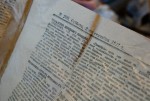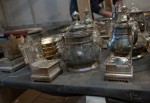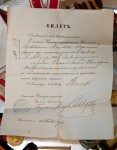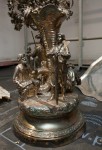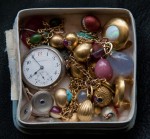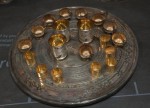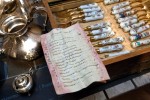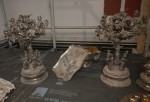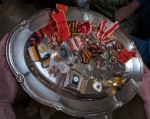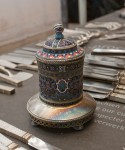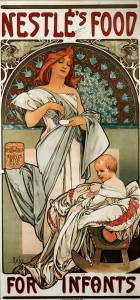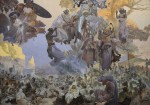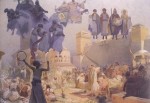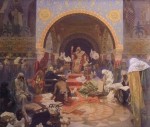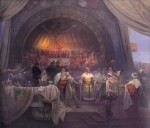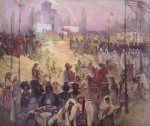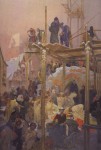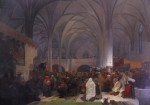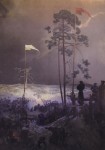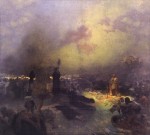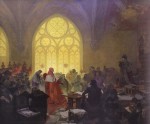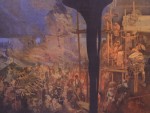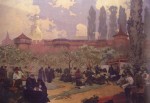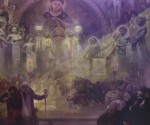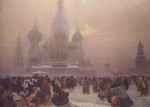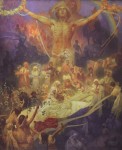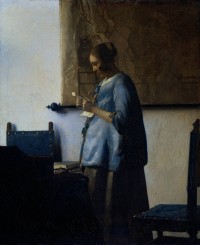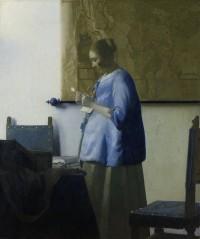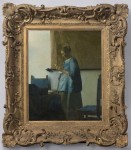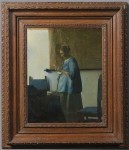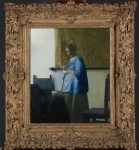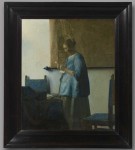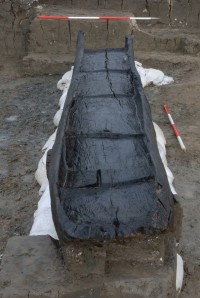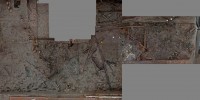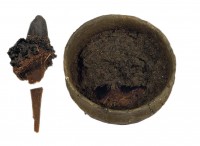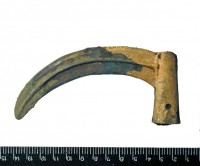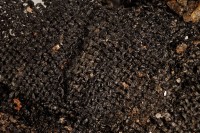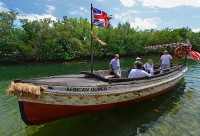 Last December, Captain Lance and Suzanne Holmquist announced that they would restore the African Queen and put her back to work doing inland water tours. After three and a half months of work and almost $70,000, the 30-foot riverboat used in the iconic 1951 John Huston movie starring Humphrey Bogart and Katharine Hepburn is officially back in business.
Last December, Captain Lance and Suzanne Holmquist announced that they would restore the African Queen and put her back to work doing inland water tours. After three and a half months of work and almost $70,000, the 30-foot riverboat used in the iconic 1951 John Huston movie starring Humphrey Bogart and Katharine Hepburn is officially back in business.
The steamship, built in England in 1912 then used by the British East Africa Railway Company to carry cargo and passengers in the Belgian Congo and Uganda, had been deteriorating in dry dock for ten years. Her previous owner, Jim Hendricks Sr., had rescued from her a land bound horse farm in Ocala, Florida in 1982, then used her for tours and took her around the world twice for special events. Once Jim Sr. died in 2002, the boat passed to his son Jim who unfortunately could not afford to maintain her as his father had.
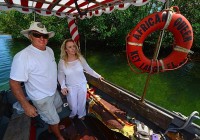 The Holmquists could see the Queen sitting forlorn on her dock as they operated their charter boat business. Captain Lance, who has a passion for restoring boats, noticed that even decrepit in dry dock the African Queen was still a hugely popular stop for tourists. Hundreds of people would come every day to take her picture. So they struck a deal with Mr. Hendricks: they’d restore the boat as historically accurately as possible, and in return Jim would lease them the Queen to use for charter tours.
The Holmquists could see the Queen sitting forlorn on her dock as they operated their charter boat business. Captain Lance, who has a passion for restoring boats, noticed that even decrepit in dry dock the African Queen was still a hugely popular stop for tourists. Hundreds of people would come every day to take her picture. So they struck a deal with Mr. Hendricks: they’d restore the boat as historically accurately as possible, and in return Jim would lease them the Queen to use for charter tours.
The restoration was challenging, but not as hard as some of the other restorations Captain Holmquist has done. The African Queen was still structurally sturdy. First they had to fix the hull. Made from 10-gauge British steel, most of it had toughed out the tough times. Only 20% of the steel panels were corroded enough to need replacing, but that 20% took three weeks of welding to fix. Watch this YouTube video to see the welders, and their commanding officer/Chihuahua, Stewart “The Killer” Kipp, in action.
Also salvageable was much of the original black African mahogany used for flooring and siding. The Holmquists just had to oil and condition it. For historical authenticity and ambiance, they decided to spend $26,000 to install a new steam boiler even though during the shooting of the film the boat wasn’t actually powered by steam; they just made it look like it was. Last up was a new paint job, which lasted just a few hours before Captain Holmquist took a rag and some brown paint and messed it up so it would look like it looked chugging through the jungle with Bogie and Hepburn.
“We wanted it to look beat up, like it appeared [in the Congo] in World War I,” said Suzanne Holmquist. “It’s starting to get its sheen back, and its authentic look.”
The African Queen will be officially relaunched Thursday. The Key Largo Chamber of Commerce is throwing her a party and fundraiser dockside at the Holiday Inn Key Largo. Stephen Bogart, son of Humphrey and Lauren Bacall, will be there. The first ride on the Queen with Stephen Bogart will be auctioned off at the event, as will the original steel pieces from the hull that were replaced. The party is open to the public; the suggested donation is $15.
Starting at the end of the month, the African Queen will be taking passengers on two-hour canal cruises several times a day, and for six-passenger dinner cruises around Key Largo on select evenings. She will also be available for private charters. See her back on the water and hear her lovely bell in this video.

